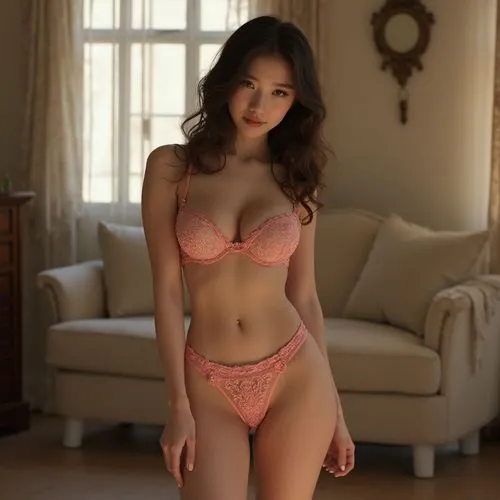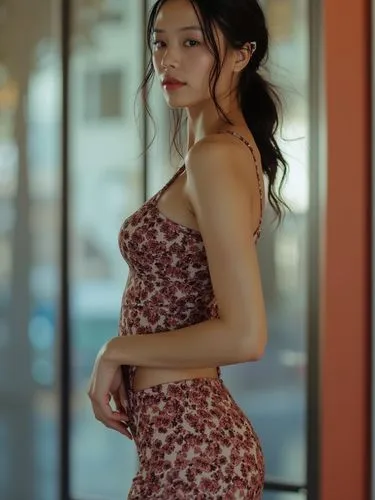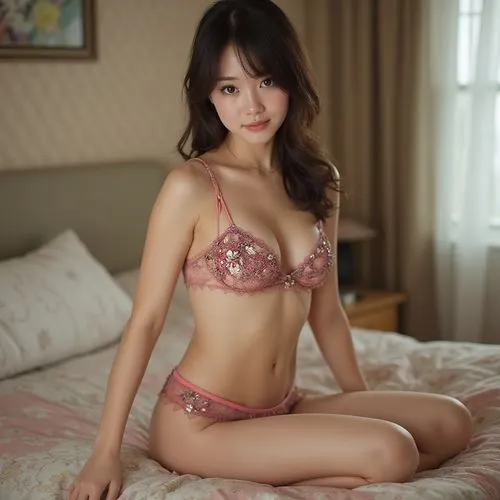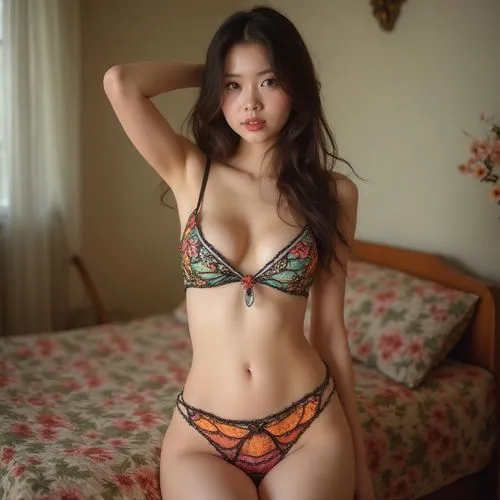Our approach is simple: start with the stations, then pick your vibe. Whether you’re drawn to neon-heavy Kabukicho (Shinjuku), classic soapland heritage in Yoshiwara (near Minowa), upscale mixes in Roppongi, or love-hotel convenience in Shibuya’s Dogenzaka, this guide connects the dots with clear walking times and realistic budgets. We also call out common pain points—aggressive touts, confusing “free information” booths, or language barriers—and show you exactly how to navigate them.
Why SoapEmpire? We’re a Japan-based nightlife information portal focused on clarity and practicality. Our editors continuously check access routes, venue systems, and price baselines. We distill the essentials and—crucially—pair them with must-know Japanese phrases in English + romaji + Japanese. That combination saves time at reception, prevents misunderstandings, and keeps your night smooth. Whether your search intent is maps, locations, prices, etiquette, or safety, this guide covers it end to end and keeps the tokyo red light district map concept usable on the ground.
Your benefit: fewer surprises, better nights. You’ll know which exit to take, which streets are busy at what time, typical course systems, how to make a booking (or use a shuttle), and what to say at the counter. If you want deeper, store-specific advice or custom routing, SoapEmpire can help. For more details, please contact us via the inquiry form.
Key Points
- Shinjuku–Kabukicho: 7–10 min walk from JR Shinjuku East Exit; neon core, bars, host/hostess clubs. See JNTO and Go Tokyo.
- Yoshiwara (Taito): Nearest is Hibiya Line Minowa; many soaplands offer station shuttles. See access notes from shops (e.g., Academy Yoshiwara).
- Roppongi: Foreigner-friendly clubs/bars; Roppongi Station (Hibiya/Oedo). See Japan-Guide.
- Shibuya–Dogenzaka: “Love Hotel Hill,” 3–8 min from Shibuya Hachiko Exit toward Dogenzaka. See JapanTravel.
- Ueno–Uguisudani: Dense love-hotel zone one stop north of Ueno on JR Yamanote. See Tokyo Cheapo.
Map-style list (Stations → Area → Walk time → Vibe)
- Shinjuku Station (JR) East Exit → Kabukicho → 7–10 min → Neon, bars, host/hostess, late-night food.
- Minowa (Tokyo Metro Hibiya Line) → Yoshiwara → 15–20 min walk or shop shuttle pickup → Soapland heritage district.
- Roppongi (Hibiya/Oedo Lines) → Roppongi → 1–5 min → Clubs, expat bars, upscale lounges.
- Shibuya (JR/Metro) Hachiko → Dogenzaka/Maruyamacho → 5–8 min → Love hotels, nightlife streets.
- Uguisudani (JR Yamanote) → Love-hotel strip → 3–6 min → High hotel density, near Ueno.
- Ikebukuro (JR/Metro) North/West Exits → 5–10 min → Mixed nightlife, budget spots.
- Gotanda (JR/Asakusa Line) East/West → 3–8 min → Compact bar/club and adult-oriented pockets.
References: Roppongi summary, Kabukicho Tower, Uguisudani area, Dogenzaka basics, Yoshiwara shop access.
How to Use Popular Venue Types (Step-by-Step)

You searched for a tokyo red light district map, but the map alone won’t get you through the door. Tokyo venues use systems that are unfamiliar if you’re new to Japan: time-based “courses,” nomination fees, pre-pay at reception, ID checks, or station shuttles in places like Yoshiwara. Many issues travelers face—language gaps at reception, misunderstandings about payment timing, confusion over where to meet the shuttle—are solved by knowing the exact steps before you go.
SoapEmpire specializes in turning mystery into a predictable flow. Below you’ll find clear, step-by-step sequences for common venue types (soapland, delivery health, pink salon, host/hostess club, and love hotel usage around Dogenzaka). We focus on what staff will ask, what you need to show (valid photo ID is often required), and when to pay. We also include realistic time expectations so you can plan trains and last orders. While the city’s nightlife evolves, these fundamentals stay the same and make your night smoother—no awkward moments at the counter.
If you want a custom action plan (e.g., “land at Shibuya at 20:30 → Dogenzaka love hotel → bar in Roppongi”), SoapEmpire can map door-to-door logistics and phrase cards to match your route and budget. It’s the difference between wandering and knowing. For more details, please contact us via the inquiry form.
Soapland (Yoshiwara model)
- Reserve by phone/website (same-day often OK). Ask about shuttle pickup (Minowa / Ueno / Nippori vary by shop).
- Meet at designated point; show booking name and photo ID if asked.
- At reception: choose course length; optional nomination; pay upfront (cash is common; some accept cards).
- Staff explains house rules; you’re guided to the room. Services are time-based; extensions, if any, must be agreed in advance.
- After the session, confirm if gratuities are permitted (many venues are no-tip).
Access norms corroborated by shop pages and guides (e.g., Academy Yoshiwara Access, Camikaze Yoshiwara access).
Delivery Health (Out-call)
- Call or book online; confirm hotel policy (love hotels in Shibuya/Uguisudani are common rendezvous points).
- Provide your name/number and hotel room number after check-in; some require ID or a quick verification call.
- Pay method varies (cash at reception/room, electronic payments at booking for some services).
- Meet at lobby or your room as instructed. Respect venue and building rules.
Pink Salon / Image Club (In-shop, short time)
- Walk-in or call ahead. At reception: choose course length; pay upfront.
- Some shops have rotation systems or quick selections; staff will guide you.
- Extensions/nomination fees (if available) are requested at the counter.
Host/Hostess Clubs (Conversation & Drinks)
- Confirm set price (time + drinks) and service charge before entry.
- Nomination or table charge may apply. Card accepted more often here; ask first.
- Keep an eye on time—extensions auto-apply in some clubs.
Love Hotels (Shibuya Dogenzaka / Uguisudani)
- Walk-in at reception or use the touchscreen in the lobby to pick a room.
- Choose Rest (short stay) or Stay (overnight); pay by machine or at desk, depending on hotel.
- Amenity-rich and foreigner-friendly; check-out is usually automated.
Dogenzaka overview: JapanTravel, Coto Academy. Uguisudani context: Tokyo Cheapo.
Prices & Systems by Venue Type

Price transparency is the hardest part of navigating Tokyo nightlife from a simple tokyo red light district map. Listings sometimes show “course only” without tax, nomination, or extension. We solved that by presenting realistic, traveler-facing ranges and naming the most common add-ons. Your final total depends on the shop, time of day, and promotions, but these baselines will keep you within budget.
SoapEmpire tracks public rate cards and shop landing pages across major districts to compile ranges that reflect current market norms. We also flag when cash is favored and when cards are typically accepted. Use the table below as a planning tool, then confirm the day’s “system” at reception (Tokyo venues are good at upfront explanations if you ask clearly—our phrase list later will help).
Want a price-optimized itinerary—e.g., weekday afternoon deals in Gotanda, then a late bar in Roppongi? We can tailor routes and timing to stretch your budget without sacrificing experience. For more details, please contact us via the inquiry form.
- Soapland (Yoshiwara): ~¥20,000–¥60,000 / 60–90 min typical; nomination ¥1,000–¥5,000; extension pro-rated. Many offer station shuttles (Minowa/Ueno). Examples: KADOEBI Group, Happiness Tokyo.
- Delivery Health: ~¥15,000–¥35,000 / 60–90 min + transport fee to hotel (varies). Payment rules differ; confirm when booking.
- Pink Salon / Image Club: ~¥4,000–¥12,000 / short courses; rotation systems may exist; ask clearly about time & tax.
- Host/Hostess Club: Set charge ~¥3,000–¥8,000 + drinks + service fee (10–30%); extensions may auto-apply.
- Love Hotels (Dogenzaka/Uguisudani): Rest (1–3h) ~¥3,000–¥8,000; Stay (overnight) ~¥8,000–¥20,000+ depending on weekend/season.
Always verify tax/fees and payment method at reception. See area/district context via NAVITIME nightlife safety basics and official shop pages linked above.
District Guide: Where to Go & How to Get There

A great tokyo red light district map doesn’t just mark pins— it tells you how to approach each area. Kabukicho is a neon-dense grid best entered from JR Shinjuku’s East Exit. Yoshiwara is a classic enclave that pairs best with a shop shuttle from Minowa or Ueno. Roppongi concentrates expat-friendly bars around two subway lines. Dogenzaka in Shibuya is a compact slope you reach from the scramble in minutes. Each zone has its own rhythm, crowds, and “best window” to visit.
Below you’ll find access notes you can trust on the street: which exit to take, how long the walk is, and what’s typical there. We also include official or well-regarded references, so you can double-tap details en route. Use this with our phrase list and price baselines to plan a smooth, efficient evening.
If you’re short on time, combine two zones that share a late-night train corridor (e.g., Shibuya → Roppongi via Hibiya/Oedo connections). SoapEmpire can also build a “last train safe” route by time block. For more details, please contact us via the inquiry form.
Kabukicho (Shinjuku): From JR Shinjuku East Exit, 7–10 min on foot; landmark: Godzilla Head/Hotel Gracery, Kabukicho Tower. Lively, tourist-friendly core with touts—decline politely and choose venues directly. References: JNTO Kabukicho, Kabukicho Tower.
Yoshiwara (Taito): Nearest station: Minowa (Hibiya Line). Many shops operate station shuttles and specify meeting spots; walking takes ~15–20 min. Classic soapland district with long history. References: shop access page, area access explainer.
Roppongi (Minato): Roppongi Station (Hibiya/Oedo). Foreigner-friendly bars/clubs; mix of upscale venues. Reference: Japan-Guide.
Shibuya – Dogenzaka/Maruyamacho: From Shibuya Hachiko Exit toward Dogenzaka; 5–8 min to “Love Hotel Hill.” References: JapanTravel, Coto Academy.
Ueno – Uguisudani: JR Uguisudani (1 stop from Ueno) → 3–6 min walk to a dense love-hotel strip; convenient for late returns. Reference: Tokyo Cheapo.
Ikebukuro: North/West side has compact nightlife pockets and budget options; use clear price checks at entrances. (General city guides: Ikebukuro maps and night articles—e.g., Mapple night dining.)
Gotanda: Compact, salaryman-friendly bars near East/West Exits; pockets of adult-oriented venues. For mainstream nightlife listings, see Tripadvisor (Gotanda) and local bar-hopping notes from OMO5 Gotanda.
Useful Japanese Phrases (English + Romaji + 日本語)

A map is only half the journey; speaking clearly at the counter is the other half. The phrases below target real reception dialogs—confirming course time, payment, ID, shuttles, and extensions—so you can pair your tokyo red light district map with the exact words staff expect. Use short sentences, keep your phone with your booking number ready, and show your passport if asked.
Tip: say the English first, then repeat the Japanese slowly with romaji. Staff will appreciate the effort and the conversation becomes smoother. If you need more lines tailored to a specific shop, SoapEmpire can craft a mini “phrase card” to match your route. For more details, please contact us via the inquiry form.
- How much is the 60-minute course? — Rokujūppun kōsu wa ikura desu ka? — 60分コースはいくらですか?
- Do you accept credit cards? — Kurejitto kādo wa tsukaemasu ka? — クレジットカードは使えますか?
- Do you accept foreign customers? — Gaikokujin mo riyō dekimasu ka? — 外国人も利用できますか?
- I have a reservation. — Yoyaku shite imasu. — 予約しています。
- Where is the meeting point for the shuttle? — Shatoru no machiawase basho wa doko desu ka? — 送迎の待ち合わせ場所はどこですか?
- Is the tax/service fee included? — Zei to sābisu-ryō wa fukumaれte imasu ka? — 税とサービス料は含まれていますか?
- I’d like to nominate this staff. — Kono kata o shimei shitai desu. — この方を指名したいです。
- Can I extend 30 minutes? — San-jūppun enchō dekimasu ka? — 30分延長できますか?
- Cash is okay. — Genkin de daijōbu desu. — 現金で大丈夫です。
- Which exit should I take? — Donokuchi kara deru to ii desu ka? — どの口から出るといいですか?
Recommended Stores (English-Friendly Picks)

Store choice matters more than any static tokyo red light district map. Reputable operators publish clear systems, list access instructions, and often provide shuttles around Yoshiwara. For travelers, we prioritize long-running brands with easy directions and predictable reception. Use the table below as a starting point; confirm the day’s “course” and payment on the official page before you go.
SoapEmpire’s selection leans on public shop info and consistent traveler feedback across seasons. If you need a tailored shortlist (e.g., English-capable phone line, card-friendly, afternoon deals), we can filter options for your dates.
Reminder: always follow staff instructions, bring a valid photo ID, and verify whether shuttles are operating on your visit date. For more details, please contact us via the inquiry form.
| Store Name | Area | Features | Price Range | Official Website |
|---|---|---|---|---|
| KADOEBI | Yoshiwara, Tokyo | High-end Soapland with experienced staff | ¥20,000–¥50,000 / 60 min | kadoebi.com |
| Dream Group | Yoshiwara, Tokyo | Famous chain offering VIP courses | ¥25,000–¥60,000 / 60 min | dreamgroup.co.jp |
More examples and English pages: Happiness Tokyo (Yoshiwara).
Realities on the Ground: Crowds, Vibe, Foreign-Friendliness & Etiquette

The “where” is easy on a tokyo red light district map, but the “when and how” define your night. Kabukicho peaks 21:00–01:00 and feels busiest on Fri/Sat; touts are common in certain blocks—avoid street solicitation and walk into venues directly. Roppongi mixes tourists and expats; late-night trains are sparse, so plan rides in advance. Yoshiwara is calmer but spread out; the shuttle saves time and makes meeting points clear. Dogenzaka sees steady traffic nightly near the love hotels; rooms vary by timing and day.
Most issues travelers report—price misunderstandings, hidden add-ons, language friction—are solved by asking three things upfront: “total price with tax,” “time included,” and “extension/nomination fees.” Keep your passport, use your inside voice at reception, and follow staff rules. Many guides also warn that “Free Information” counters (muryō annai-jo) in nightlife zones are not official tourism desks; they steer toward specific venues—go direct if you already know your destination (NAVITIME note).
SoapEmpire sums it up like this: choose your station, confirm total price, and speak simply using our phrase list. Do that, and Tokyo nights are enjoyable, efficient, and drama-free. For more details, please contact us via the inquiry form.
Key Points
- Busiest windows: Fri/Sat 21:00–01:00 (Kabukicho/Roppongi). Earlier is calmer for first-timers.
- Touts: Decline and choose venues directly. Check official sites or well-known operators.
- ID & Payment: Bring passport; cash is widely accepted, cards vary by venue—ask first.
- Shuttles: Common in Yoshiwara from Minowa/Ueno/Nippori—confirm time & meeting point on the shop page.
- “Free info” booths: Not official tourism desks; go direct if you already picked a shop (reference).
FAQ
Still mapping out your night? These quick answers clarify the most common questions travelers ask after searching for a tokyo red light district map. If you need neighborhood-specific help, SoapEmpire can assemble a route with exits, walking times, and phrase cards matched to your plan. For more details, please contact us via the inquiry form.
Is Kabukicho safe to visit?
It’s a lively entertainment district and generally manageable if you avoid touts, confirm prices, and stick to reputable venues. See overviews by JNTO and safety notes compiled by travel safety guides.
How do I reach Yoshiwara?
Take the Hibiya Line to Minowa and walk ~15–20 minutes or use a shop’s station shuttle (meeting points vary). Example access page: Academy Yoshiwara.
Where are love hotels clustered?
Shibuya Dogenzaka (3–8 min from Hachiko) and Uguisudani (one stop north of Ueno). See Dogenzaka guide, Uguisudani area.
What should I confirm at reception?
Total price (with tax), time included, nomination/extension fees, and payment method (cash/card). If using a shuttle, reconfirm your return logistics before you leave.
Sources & Helpful Links
- Japan National Tourism Organization — Kabukicho overview
- Go Tokyo — Kabukicho Tower (area orientation)
- Japan-Guide — Roppongi
- JapanTravel — Shibuya Love Hotel Hill
- Tokyo Cheapo — Uguisudani
- NAVITIME — Nightlife safety & “free information” counters
- Academy Yoshiwara — Access & shuttle examples
- Happiness Tokyo (Yoshiwara) — Official
- KADOEBI Group — Official
